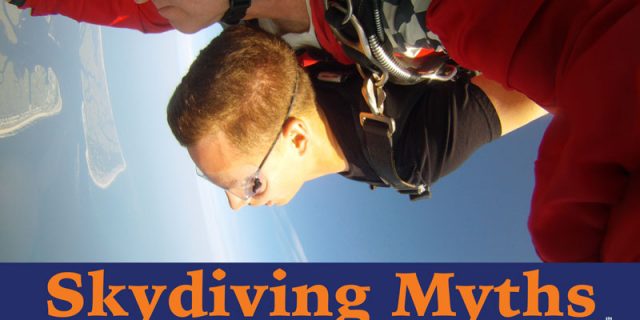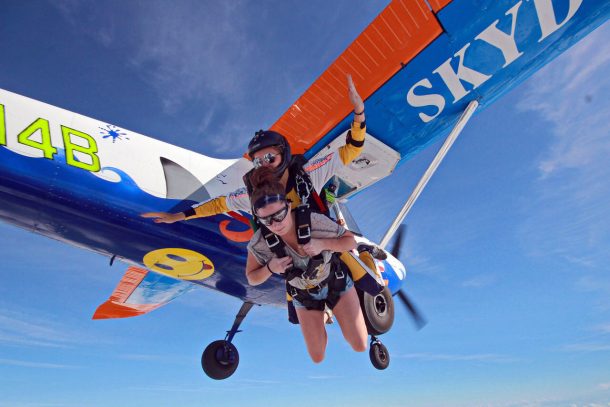Skydiving Myths Revealed!
Skydiving Information
Posted by: SCC ADMIN
10 years ago

Watch any news report about skydiving and you’ll find that the majority of the facts are incorrect. There’s a lot of misinformation out there, so we clear up some commonly asked questions about skydiving in this week’s article – Skydiving Myths Revealed (sounds like it could be on TV with Unsolved Mysteries or soemthing…haha!)
SKYDIVING MYTHS REVEALED
MYTH #5: YOUR FIRST SKYDIVE MUST BE A TANDEM SKYDIVE!
Modern day skydive training does not require you to make a tandem skydive first – you can enroll in a static line or Accelerated Free Fall training program and have a parachute on your back for your first jump!
MYTH #4: WHEN YOUR PARACHUTE OPENS, YOU ASCEND
We’ve all seen videos of skydivers who seem to go up after the parachute deploys – it’s an optical illusion. What you’re actually seeing is the videographer continuing to descend while the skydiver is dramatically slowing down as the parachute opens… giving the appearance that they’re actually going up.
MYTH #3: EVERYONE FALLS AT THE SAME SPEED
Remember when Wylie Coyote fell at the same speed as the anvil? It’s not the same! The heavier the object, the faster it will fall. Other cool things that effect free fall speed is drag. If you wear a very baggy jumpsuit, you’ll fall slower than someone with a similar body shape who is wearing a skin-tight jumpsuit.
What also effects free fall speed is surface area. Someone falling in a belly to earth position will fall slower than someone falling in head to earth position.
MYTH #2: CONVERSATIONS IN FREE FALL
Imagine sticking your head out of the window of your car while driving down the freeway at 120mph… and then talking to someone. Unless you’re the best lip readers in the world, you won’t have any clue what anyone is saying to you. The Bucket List and Point Break make it look easy but the truth is… don’t believe everything you see on television!
MYTH #1: PULLING YOUR RIP CORD
You’ll hear this term all of the time… “He pulled the rip cord and the parachute came out.” The truth is there are no rip cords! Rip cords are a thing of the past. Today, sport skydivers deploy their parachutes by throwing a little ball that looks like a hackey sack into the air. That little hackey sack is attached to a small parachute known as the ‘pilot’ chute. When the pilot chute catches wind it inflates and releases a closing pin which keeps the container (backpack) closed. With the pin released, the parachute comes out of the container, catches air and begins the deployment sequence of the parachute. A good visual demonstration of this sequence can be found here.
So… no rip cords… just pilot chutes!





